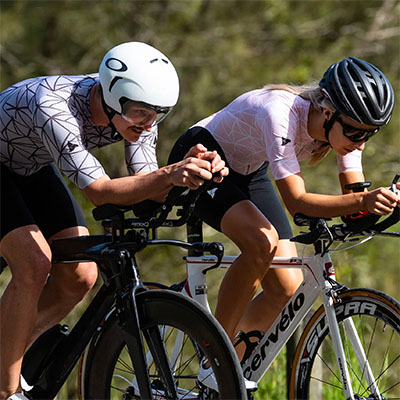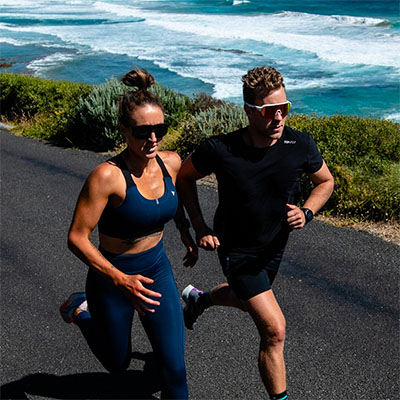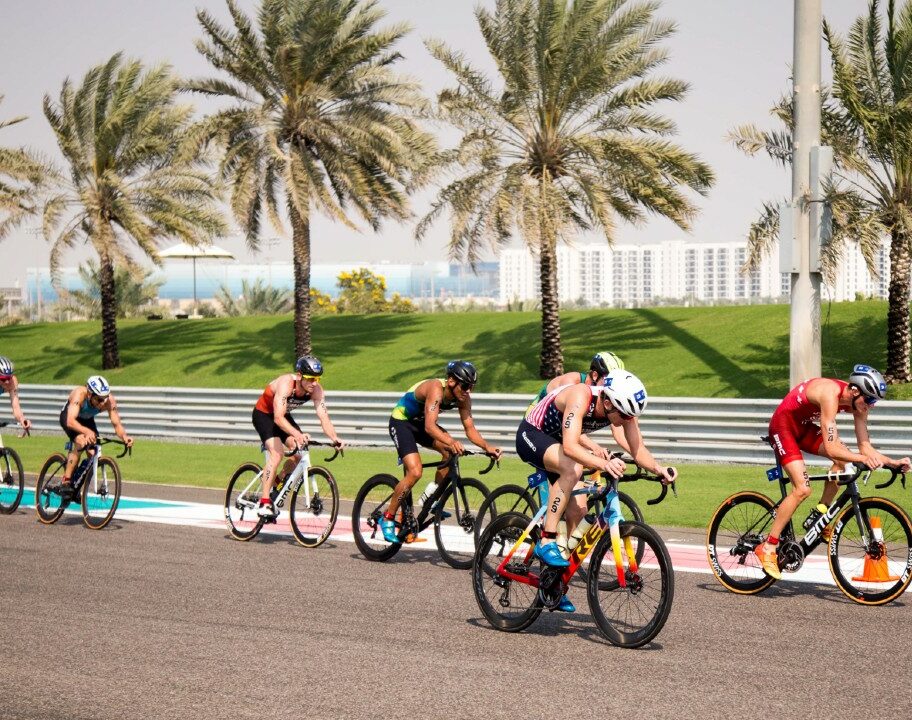Dr. Josephine Perry from Performance in Mind (www.performanceinmind.co.uk) has been a triathlete for more than a decade now, regularly representing Great Britain at various Age-Group events over that time. She’s also a chartered psychologist a member of the Association of Applied Sports Psychologists.
She has been undertaking research since last summer, looking at the impacts of technology on the risk of exercise addiction.
Some interesting findings too, suggesting that the risk of exercise addiction in ultra-endurance athletes is higher than has previously been reported and that use of health technologies can increase the risk of becoming addicted to exercise…
Athletes online: Research finds technology is fuelling exercise addiction
Headline points:
- New research has found that the risk of exercise addiction in ultra-endurance athletes (marathon runners, long distance cyclists, half / full ironman triathletes) is 44.7%. This figure is higher than has previously been reported in other sports.
- The research also found that endurance athletes using connected health technologies (such as fitness trackers) and social media in their training are increasing their risk of becoming addicted to exercise.
- Athletes who use lots of technology and are at risk of exercise addiction are often using technology to seek out an online community to cope with the loneliness of their training. These online communities support athletes, but also facilitate them in extensively comparing themselves against other athletes which can cause them stress, increase injury risk, lower potential performance and reduce enjoyment in their sport.
New research being published today by Performance in Mind, the performance psychology consultancy, has found that technologies which are often designed to help those with poor fitness to increase their exercise levels are also being used extensively by ultra-endurance athletes and the ‘stickiness’ of these tools is pushing some of them into exercise addiction. Those using a large number of technologies in their sport were found to have the highest risk of exercise addiction. There was a significant positive correlation between the level of use of fitness technology and risk of exercise addition. 4.6% of the variance in risk of exercise addiction could be explained by the level of use of fitness technology. While the strength of the link was not large it is important as fitness technologies, especially trackers and social media, are now used so much by athletes.
The same research found the level of ultra-endurance athletes who are at risk of becoming addicted to their sport is 44.7%. Across the key sports this breaks down into triathletes (46.1% risk), runners (44.3% risk) and cyclists (39.6% risk).
Exercise addiction usually begins as a beneficial activity but over time progresses to a state that is pathologically excessive. When the person uses exercise to modify their mood, requires increasingly higher doses, gets frustrated and angry at the thought of missing a session, sees physiological changes if they try to withdraw and then relapses when stopping, they risk losing self-control over their exercising. The tipping point is often when the compulsion to exercise is prioritised over other parts of the athlete’s lifestyle; harming their social relationships, work focus or family time and causing conflicts. It can have damaging effects such as injury, personal inconvenience, marital strain, interference with work or reduced time for other activities.
The research found the most commonly used technologies by ultra-endurance athletes were; GPS watches or trackers (92.2%), online trackers (84.3%) and Facebook (70.2%).
Chartered Sport Psychologist, Dr Josephine Perry, who ran this project said: “Exercise addiction is a really under researched area, but one which is important for sports psychologists, coaches and athletes to know more about as it can cause such distress for athletes, and sometimes their families too. Diligence and focus is necessary in order to be a great endurance athlete but when we get too absorbed and inflexible around our training, particularly if we are intently tracking our data, we can lose sight of our real goals and cause ourselves harm.”
The study saw that the high technology using, at risk of addiction athletes, were often using technology to seek out online communities to help them cope with the loneliness of their training. The in-depth interviews with these athletes found while they really valued these communities, the technologies also allow them to extensively compare themselves with other athletes. This comparison is causing them stress and pressure, increases their likelihood of getting injured, lowers their potential performance and reduces their love of their sport. A particular risk on relying on the online community for support comes when an athlete gets injured. It can increase the isolation they feel and prompt feelings of jealousy or despondency about what they cannot do. If they are training as a coping mechanism for other things (often stress or mental health issues) then not being able to train, and losing all support mechanisms at the same time, could exacerbate the original issues.
Perry also found that the gamification of some of these technologies, alongside personality traits which see athletes work incredibly diligently towards their sporting goals, means that they can get fixated by the data and have a strong adherence to using the tools. “What was eye-opening in this study was that technologies like Strava or Garmin were driving some athletes to deviate from their own ‘real life’ goals. This reduced their chances of achieving success and, far worse, increased their risk of injury. The way these technologies allow athletes to compare their data to others can cause some to worry about what others think and is pushing them to question themselves or second guess their coaches or training plans. In some cases, the athletes reported this had caused them to become injured or to burnout. Others stopped them enjoying their sport and began to label themselves a failure.”
What does all of this mean in practice?
Why do you only talk about ‘risk’ of exercise addiction rather than exercise addiction?
In studies like this we tend to assess risk of exercise addiction rather than diagnosed exercise addiction as an addiction needs to be diagnosed in a one to one situation directly with a qualified psychologist or psychiatrist. It would be irresponsible to try to do this online. What we can do online however is identify if the indicators of exercise addiction are evident.
What can athletes who are worried they are addicted to their sport do to tackle this?
Athletes worried they may be too absorbed in their sport in a way that could be causing them harm should read the following statements and consider how many apply to them:
- My exercise is incredibly important to me
- I have increased the amount of training I do
- I use exercise to improve my mood.
- I struggle when I can’t exercise
- I feel guilty when I can’t exercise
- When I stop exercising for a while I always go back to it and often with more intensity
- My sport gives my life a focus and I can feel aimless without it
- Competing in my sport has caused conflict with friends, family or work.
If they recognise themselves in a significant number of these (particularly the point about causing conflict) then it would be beneficial to seek treatment. Currently CBT and motivational interviewing are the suggested routes to try.
What are the main risk factors for exercise addiction?
Previous research has found an athlete’s addiction risk increases:
- When race distances get longer
- When training hours increase
- When the level of competitiveness rises
- As athletes get older
- If an athlete has a higher BMI
- If an athlete has an eating disorder
- When certain personality traits (narcissism, extroversion, conscientiousness, excitement-seeking, perfectionism and achievement striving) are strong
Who took part in the study?
- 255 amateur endurance athletes (average age 41 but ranging from 19-70) completed an online survey in the summer of 2017.
- Eight of these athletes who have a risk of addiction and use a lot of technology in their training were also interviewed in depth about how they use technology.
- On average the participants:
- Had been competing in their sport for 9 years and 3 months.
- Train for 10 hours and 16 minutes a week.
- Have a risk of exercise addiction of 22.74. The measure use gives scores from 6 – 30. Anyone scoring 24 or over is considered to be at risk.
What technologies are ultra-endurance athletes using?
The most commonly used technologies were:
- GPS watch or tracker (92.2%)
- Online tracker (84.3%)
- Facebook (70.2%)
- Twitter (39.6%)
- Posting on a forum (35.3%)
- Using an online training diary (34.5%)
- Being in WhatsApp group (27.8%)
- Listening to sports podcasts (18.4%)




















